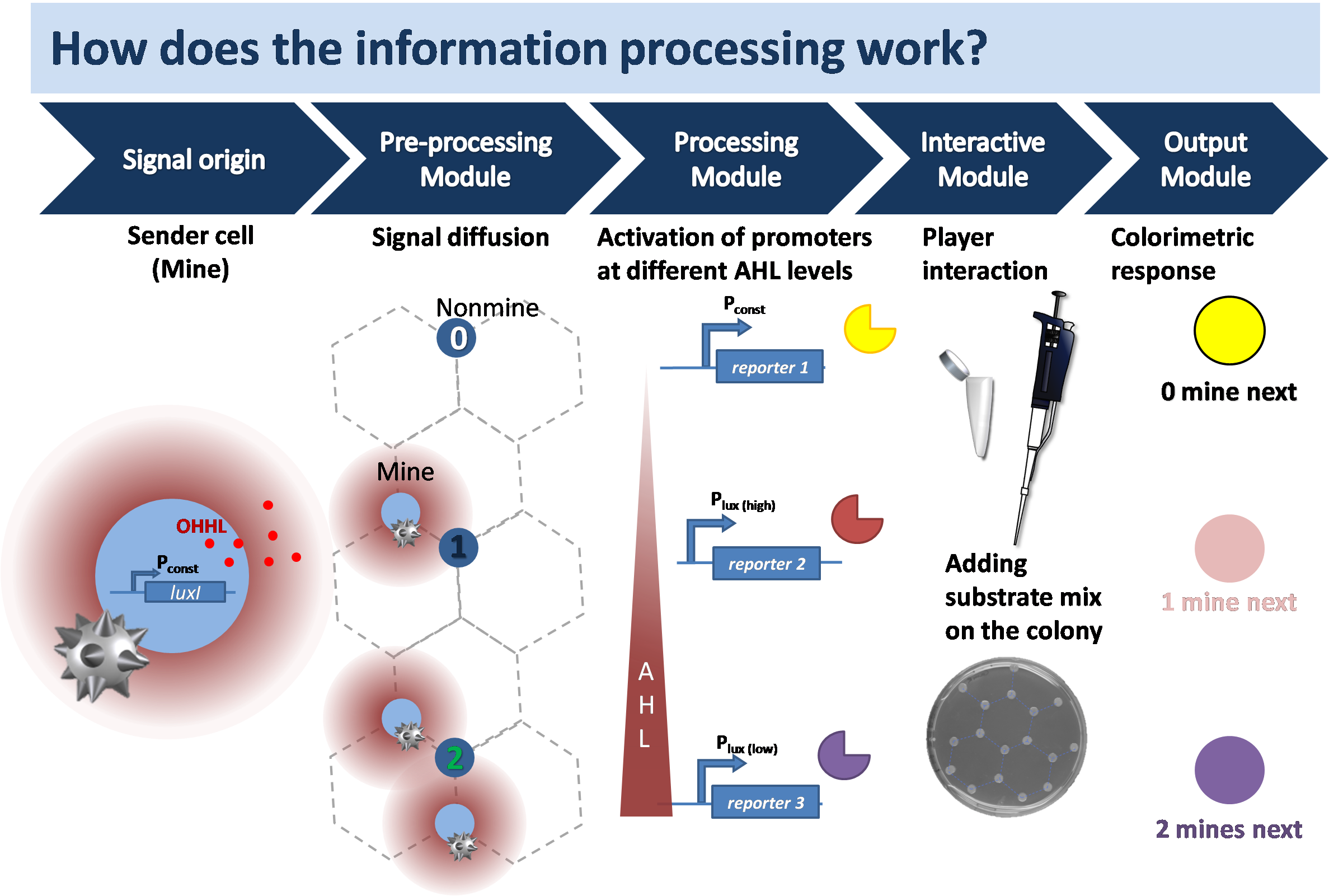Team:ETH Zurich/Infoproc
From 2013.igem.org
| Line 3: | Line 3: | ||
<h1>Information processing</h1> | <h1>Information processing</h1> | ||
| - | <p align="justify"> | + | <p align="justify">The agar minefield consists of colonies in a hexagonal grid with mine and non-mine colonies. We have two bacterial strains: 1. the mine strain which are the sender cells and 2. the non-mine strain which are the receiver cells. The cells communicate through diffusion of OHHL and change color to give the player information in order to logically carry out the next move in the game. The colonies remain white as seen on the agar plate until any substrate is added. The left and the right click of the mouse is simulated with the addition of the multi-substrate mix and the single substrate.</p>[[File:infoproc14.png|800px|center|thumb|<b>Figure 1: Signal transduction from secreted signaling molecule to colorimetric response.</b> The signaling diffuses from sender cell (Light blue) to the receiver cells (dark grey). The signal is processed depending on how many sender cells are surrounding the receiver cell based on different high pass filters. The signal is cconverted into a first of all hydrolase based output depending on the signal concentration. After an incubation time of 18 hours the player interacts by pipetting a substrate mixture on the colonies. The hydrolase convert the substrate in a colorimetric output visible by eye ]] |
<br clear="all"/> | <br clear="all"/> | ||
<p align="justify">The biology is explained here. The sender colony secretes the quorum sensing molecule 3-oxo-N-hexanoyl-L-homoserine lactone | <p align="justify">The biology is explained here. The sender colony secretes the quorum sensing molecule 3-oxo-N-hexanoyl-L-homoserine lactone | ||
Revision as of 15:53, 4 October 2013
Information processing
The agar minefield consists of colonies in a hexagonal grid with mine and non-mine colonies. We have two bacterial strains: 1. the mine strain which are the sender cells and 2. the non-mine strain which are the receiver cells. The cells communicate through diffusion of OHHL and change color to give the player information in order to logically carry out the next move in the game. The colonies remain white as seen on the agar plate until any substrate is added. The left and the right click of the mouse is simulated with the addition of the multi-substrate mix and the single substrate.

The biology is explained here. The sender colony secretes the quorum sensing molecule 3-oxo-N-hexanoyl-L-homoserine lactone (OHHL) that diffuses through the agar to the surrounding cells. The receiver cells passively take up the OHHL by diffusion where the signaling molecule forms a complex with the inactive LuxR to activate it. The information is translated via mutated pLuxR promoters of different OHHL affinities which leads to the secretion of different hydrolases. Within minutes after the addition of substrate a change in color indicates the identity of the played colony and number of surrounding mine colonies.
 "
"





